

Articles
How To Store Painting
Modified: February 22, 2024
Learn how to properly store your articles in order to keep them in excellent condition for years to come. Discover essential tips and tricks for preserving your paintings.
(Many of the links in this article redirect to a specific reviewed product. Your purchase of these products through affiliate links helps to generate commission for Storables.com, at no extra cost. Learn more)
Introduction
Properly storing paintings is essential to protect their beauty and ensure their longevity. Whether you are an art enthusiast, collector, or artist, understanding the correct methods for painting storage is crucial. A poorly stored painting can suffer from damage such as fading, warping, cracking, or even mold growth.
In this article, we will guide you through the process of how to store paintings effectively. We will discuss the materials needed, choosing the right storage space, preparing the painting for storage, as well as specific storage methods for framed and unframed paintings of different mediums.
So, if you want to keep your precious artwork in pristine condition and preserve its value for years to come, read on to discover the best practices for painting storage.
Key Takeaways:
- Proper painting storage is essential for preserving artwork. Use acid-free materials, choose the right storage space, and follow specific guidelines for different mediums to ensure longevity and protection.
- Avoid common storage mistakes to maintain artwork integrity. Handle with care, provide adequate protection, and invest in climate-controlled, secure storage. Regular inspection and documentation are crucial for long-term preservation.
Read more: How To Store A Painting
Materials Needed for Proper Painting Storage
Before we delve into the specifics of painting storage, let’s start by discussing the materials you will need to ensure proper storage conditions.
1. Acid-free Archival Materials: Acid-free archival boxes, folders, and sleeves are essential for protecting your paintings from acid degradation. Acid-free materials prevent the transfer of harmful chemicals onto the artwork, preventing discoloration and deterioration over time.
2. Acid-free Paper: Place acid-free paper between layers of paintings to prevent them from sticking to each other and to absorb any excess moisture.
3. Bubble Wrap or Foam: Use bubble wrap or foam to protect the surface of the painting from scratches and impact during transportation or storage.
4. Gloves: Handle paintings with clean, non-latex gloves to prevent fingerprints, oil, or dirt from transferring onto the surface.
5. Dust Covers: Use acid-free dust covers or plastic sheets to protect the front and back of framed paintings from dust and debris.
6. Storage Containers: Choose appropriate storage containers based on the size and type of paintings. Sturdy, acid-free cardboard boxes or wooden crates with proper padding are recommended.
7. Climate Control: If possible, invest in a climate-controlled storage area or use dehumidifiers and humidifiers to maintain stable humidity levels between 40-60% and temperatures between 65-75°F (18-24°C).
8. Security Measures: Implement security measures such as smoke detectors, fire alarms, and secure locking systems to protect your paintings from potential hazards.
By gathering these materials beforehand, you will be well-prepared to store your paintings in a safe and controlled environment, minimizing any risks of damage or deterioration.
Choosing the Right Storage Space
When it comes to storing your paintings, selecting the right storage space is crucial to maintain their condition and prevent damage. Here are some factors to consider when choosing the ideal storage area:
1. Environment: Look for a dry, clean, and well-ventilated space. Avoid areas prone to extreme temperature fluctuations, high humidity, direct sunlight, or areas with high levels of dust and pollutants. Basements, attics, or rooms near water sources should be avoided.
2. Stability: Ensure that the storage space is structurally stable, with no risks of leaks, flooding, or other potential hazards. The space should be secure and free from pests or insects that may cause damage to your paintings.
3. Lighting: Ideally, the storage area should have minimal or controlled lighting. Avoid exposing your paintings to direct sunlight or strong artificial light sources, as they can lead to fading and discoloration over time.
4. Size: Measure the dimensions of your paintings and choose a storage space that accommodates them without overcrowding. Leave enough room for proper ventilation and easy access to the artworks.
5. Accessibility: Consider how frequently you may need to access your paintings. If you anticipate needing regular access, opt for a storage space that allows easy and convenient retrieval of your artwork.
6. Security: Ensure that the storage space provides adequate security measures to protect your paintings from theft or unauthorized access. This may include security cameras, alarms, or restricted access to the storage area.
7. Documentation: Keep a detailed inventory of all the artworks stored in the space. This will help you keep track of your collection and assist in insurance claims if necessary.
By considering these factors, you can choose a suitable storage space that provides a safe and controlled environment for your paintings, minimizing the risk of damage and ensuring their long-term preservation.
Preparing the Painting for Storage
Before storing your paintings, it’s crucial to properly prepare them to ensure their protection during the storage period. Follow these steps to prepare your artwork:
1. Clean the Surface: Remove any dust or dirt from the painting’s surface using a soft brush or a clean, lint-free cloth. Avoid using water or cleaning solutions unless recommended by a professional conservator.
2. Inspect for Damage: Check for any signs of damage or deterioration, such as loose or flaking paint, tears, or mold growth. If you notice any issues, it’s recommended to consult a professional art conservator for appropriate repairs before storing the artwork.
3. Remove Hanging Hardware: If the painting is framed, carefully remove any hanging hardware, such as hooks or wires. This will help prevent damage to both the artwork and surrounding pieces during storage.
4. Surface Protection: Apply a layer of archival-grade varnish to protect the surface of oil paintings. This will act as a barrier against dust, dirt, and humidity. For acrylic and watercolor paintings, make sure the surface is completely dry before storing.
5. Use Acid-Free Materials: Place acid-free paper or glassine interleaving between layers of paintings to prevent them from sticking together. This also provides an additional protection layer and minimizes the risk of any paint transfer.
6. Frame Protection: For framed paintings, use acid-free foam or bubble wrap to cover the frame. This will safeguard it from scratches and impact during transportation and storage.
7. Labeling: Label each painting with relevant information such as the artist’s name, title of the artwork, and date. This will help you easily identify and locate specific paintings when needed.
Remember, proper preparation is essential to maintain the integrity of your paintings during storage. By following these steps, you can ensure that your artwork remains safe and protected until its next display or exhibition.
Framed Painting Storage
Storing framed paintings requires some additional considerations to ensure their protection. Follow these guidelines to properly store your framed paintings:
1. Vertical Storage: Store framed paintings vertically whenever possible. This helps prevent any warping or distortion of the frame and reduces the risk of damage to the artwork.
2. Protective Coverings: Before storing, cover the front of the framed painting with acid-free glassine paper or clear plastic wrap. This protects the surface from dust and debris while allowing the artwork to breathe.
3. Frame Padding: Place foam or bubble wrap around the frame edges to provide added cushioning and protection against impact.
4. Individual Wrapping: For added security, consider individually wrapping each framed painting in acid-free paper or bubble wrap. This helps protect the frames from scratches and reduces the risk of damage from neighboring artwork.
5. Container Selection: Choose a well-padded and sturdy storage container that fits the size of the framed painting. Use acid-free cardboard boxes or wooden crates with proper padding to prevent any shifting or movement during storage.
6. Fill Empty Spaces: To prevent any movement within the storage container, fill any empty spaces with additional padding, such as foam or bubble wrap. This helps maintain stability and prevents the paintings from shifting during transport or storage.
7. Storage Location: Place the storage containers containing framed paintings in a dry, clean, and temperature-controlled environment. Avoid areas with excessive moisture, direct sunlight, or high humidity levels that can damage the artwork.
Remember to handle framed paintings with care when storing or moving them. Use gloves to prevent any fingerprints or smudges on the artwork or frames, and ensure that the storage location provides adequate security measures to protect your valuable pieces.
By following these guidelines, you can ensure that your framed paintings remain well-preserved and protected during storage.
Read more: How To Store Paintings
Unframed Painting Storage
Storing unframed paintings requires careful consideration to ensure their protection and preservation. Follow these guidelines to store your unframed paintings:
1. Flat Storage: Lay unframed paintings flat to minimize the risk of warping or damage. Avoid stacking or leaning them against each other, as this can lead to creases or paint transfer.
2. Acid-Free Paper or Foam Board: Place acid-free archival paper or foam board between each unframed painting to prevent them from sticking together. This also provides extra cushioning and protection for the artwork.
3. Individual Wrapping: For added protection, consider individually wrapping each unframed painting in acid-free paper or clear plastic wrap. This helps safeguard the surface from dust, dirt, and accidental damage.
4. Size-Appropriate Storage Containers: Choose storage containers that fit the size of the paintings without overcrowding. Acid-free cardboard boxes or portfolios with appropriate padding are ideal for storing unframed works.
5. Labeling: Clearly label each storage container with information such as the artist’s name, title of the artwork, and date. This makes it easier to locate specific pieces when needed.
6. Storage Location: Store the containers in a cool, dry, and well-ventilated area. Avoid areas with extreme temperature fluctuations or high humidity levels that can potentially damage the paintings. Also, keep the storage space free from any direct sunlight exposure.
7. Regular Inspection: Periodically check the stored unframed paintings to ensure they remain in good condition. Look out for any signs of damage or deterioration and address them promptly if needed.
Remember to handle unframed paintings with care when storing or moving them. Use gloves to prevent any fingerprints or smudges on the artwork, and make sure the storage location provides adequate security measures to protect your valuable pieces.
By following these guidelines, you can ensure that your unframed paintings are stored safely and maintain their integrity and value over time.
Storing Large Paintings
Storing large paintings can pose some challenges due to their size and weight. However, with proper preparation and care, you can effectively protect and store your large artworks. Here’s how:
1. Size-Appropriate Storage Space: Ensure that you have a storage space with enough room to accommodate the size of your large paintings without any crowding or excessive pressure on the artwork. Consider renting a climate-controlled storage unit or utilizing a designated area in your home or studio.
2. Vertical Storage: Whenever possible, store large paintings vertically. This helps prevent warping or bending of the canvas or panel. If vertical storage is not feasible due to space constraints, lay the paintings flat on acid-free archival boards or foam pads.
3. Protective Coverings: Cover the front of large paintings with acid-free glassine paper or clear plastic wrap. This prevents dust, dirt, and potential scratches from coming into contact with the artwork. Avoid using materials that may stick or adhere to the surface of the painting.
4. Handling and Transport: When moving or handling large paintings, ensure that you have ample space to maneuver and enough assistance to prevent any accidents or damage. Use caution and lift the artwork from its edges or with a supporting cradle to distribute the weight evenly.
5. Framing Considerations: For large framed paintings, follow the guidelines for framed painting storage, ensuring that the frame is well protected with suitable padding and covering.
6. Storage Containers: Use large, sturdy storage containers that provide adequate protection for your large paintings. Consider using wooden crates or custom-built boxes fabricated from acid-free materials to ensure proper support and cushioning.
7. Climate Control: Maintain a stable and controlled environment for large paintings by storing them in a climate-controlled area. This helps to regulate temperature and humidity levels, preventing damage caused by fluctuations in these factors.
8. Regular Inspection and Maintenance: Regularly inspect your large paintings for any signs of damage or deterioration. Address any issues promptly to prevent further deterioration and maintain the longevity of your artwork.
By following these guidelines, you can safely store your large paintings, keeping them in optimal condition and preserving their aesthetic and monetary value over time.
Store paintings in a cool, dry place away from direct sunlight and extreme temperatures. Use acid-free materials for framing and storage to prevent damage. Avoid hanging in areas with high humidity or smoke.
Storing Small Paintings
Storing small paintings may seem simple, but it’s important to take the necessary steps to ensure their protection and preservation. Here are some guidelines for storing small paintings:
1. Size-Appropriate Storage Containers: Choose storage containers or acid-free archival boxes that are suitable for the size of your small paintings. Avoid overcrowding or stacking multiple paintings on top of each other, as this can lead to damage.
2. Individual Wrapping: Wrap each small painting individually in acid-free paper or clear plastic wrap. This offers an extra layer of protection against dust, dirt, and accidental scratches.
3. Acid-Free Interleaving: If storing multiple small paintings together, place acid-free paper or acid-free glassine between each artwork to prevent them from sticking to each other. This also helps to absorb any excess moisture and reduces the risk of paint transfer.
4. Proper Placement: Arrange the small paintings in a way that minimizes movement and avoids any potential damage during storage. Use dividers or compartmentalized storage boxes to keep each artwork separate and well-supported.
5. Storage Location: Find a clean, dry, and well-ventilated space to store your small paintings. Avoid areas prone to temperature fluctuations, high humidity, or exposure to direct sunlight, as these can cause damage over time.
6. Vertical or Flat Storage: Depending on the size and medium of your small paintings, you can choose to store them either vertically or lay them flat. If storing vertically, ensure that the paintings are secure and supported to prevent any bending or warping.
7. Handling and Transport: When moving or handling small paintings, take caution to avoid any accidental scratches or pressure on the fragile surface. Use clean, non-latex gloves to minimize the risk of oils from your fingers transferring onto the artwork.
8. Regular Inspection: Regularly check on your stored small paintings to ensure they remain in good condition. Look for any signs of damage or deterioration, such as mold growth or color fading, and address any issues promptly.
By following these guidelines, you can ensure that your small paintings are properly stored, preserving their beauty and value for years to come.
Storing Oil Paintings
Oil paintings require special care and attention when it comes to storage to ensure their longevity. Follow these guidelines to properly store your oil paintings:
1. Drying Time: Make sure the oil paintings are thoroughly dry before storing them. Oil paint takes a long time to fully dry, so allow at least six months to a year for the artwork to cure properly before storing.
2. Varnish Application: Apply a protective layer of varnish to the surface of the oil paintings. Varnish acts as a barrier against dust, dirt, and pollutants, protecting the colors and surface of the artwork. Ensure the paintings are fully dry before applying varnish.
3. Moisture Protection: Protect oil paintings from excess moisture, as it can lead to mold growth and deterioration. Store them in a dry environment with humidity levels between 40% and 60%. Consider using dehumidifiers or silica gel packets to absorb any excess moisture.
4. Storage Containers: Choose acid-free cardboard boxes or wooden crates to store your oil paintings. Line the containers with acid-free paper and place the paintings flat or vertically (if framed) within the boxes, ensuring that they are well-supported and won’t shift during storage.
5. Protect the Surface: Cover the front of the oil paintings with acid-free glassine paper or clear plastic wrap to protect them from dust, dirt, and accidental scratches. Avoid using materials that could stick or adhere to the paint surface.
6. Avoid Direct Contact: When storing multiple oil paintings together, make sure they do not come into direct contact with one another. Place acid-free paper or foam between each artwork to prevent paint transfer or sticking.
7. Location: Choose a storage space that is cool, dry, and well-ventilated. Avoid areas with extreme temperature fluctuations, high humidity, or direct sunlight, as they can deteriorate the paint and cause color fading over time.
8. Regular Inspection: Periodically check the stored oil paintings to ensure they remain in good condition. Look for any signs of damage, such as cracked paint or mold growth, and address any issues promptly to prevent further deterioration.
9. Handling and Transport: When handling or moving oil paintings, use clean, non-latex gloves to prevent fingerprints or oils from transferring onto the artwork. Support the paintings from the sides or by using a supporting cradle to distribute the weight evenly.
By following these guidelines, you can safely store your oil paintings, preserving their vibrant colors and ensuring their longevity for future generations to appreciate.
Read more: How To Store Paint In Garage
Storing Acrylic Paintings
Storing acrylic paintings properly is essential to protect the vibrant colors and delicate surface of the artwork. Here are some guidelines to follow when storing acrylic paintings:
1. Drying Time: Acrylic paint dries relatively quickly, but it’s still important to allow the paintings to fully cure before storing them. Give the acrylic artwork at least a week to dry before handling or storing to prevent smudging or surface damage.
2. Surface Protection: To protect the delicate surface of acrylic paintings, apply a layer of varnish. This adds a protective barrier against dust, dirt, and moisture. Ensure the paint is completely dry before applying varnish and follow the manufacturer’s instructions for application.
3. Storage Containers: Choose acid-free cardboard boxes or wooden crates to store your acrylic paintings. Line the containers with acid-free paper and place the paintings flat or vertically (if framed) within the boxes. Make sure the paintings are well-supported and won’t shift during storage.
4. Protect the Surface: Cover the front of the acrylic paintings with acid-free glassine paper or clear plastic wrap to prevent dust, dirt, and accidental scratches. Avoid using materials that could stick or adhere to the paint surface.
5. Avoid Direct Sunlight: Store acrylic paintings in a cool, dry area away from direct sunlight. Exposure to UV rays can cause colors to fade over time. Additionally, avoid storing acrylic paintings near direct sources of heat, as extreme temperatures can damage the artwork.
6. Moisture Control: Acrylic paintings are sensitive to moisture, so it’s important to store them in a dry environment. Maintain humidity levels between 40% and 60% to prevent mold growth or paint deformation. Consider using dehumidifiers or silica gel packets to absorb excess moisture.
7. Handling and Transport: When handling or moving acrylic paintings, do so with clean, non-latex gloves to prevent fingerprints or oils from transferring onto the artwork. Lift the paintings from the sides or use a supporting cradle to evenly distribute the weight.
8. Regular Inspection: Periodically check the stored acrylic paintings for any signs of damage or deterioration. Look for discoloration, paint cracking, or any changes in the surface. If you notice any issues, consult a professional conservator for appropriate measures to address the problem.
By following these guidelines, you can effectively store your acrylic paintings, maintaining their vibrant colors and preserving their integrity over time.
Storing Watercolor Paintings
Storing watercolor paintings properly is crucial to preserve their delicate and transparent nature. Consider the following guidelines to ensure the longevity of your watercolor artworks:
1. Handling with Care: Watercolor paintings are highly sensitive to touch and moisture. Always handle them with clean, non-latex gloves to prevent oils or fingerprints from transferring onto the artwork. Avoid touching the painted surface directly to minimize the risk of damage.
2. Acid-Free Enclosure: Store your watercolor paintings in an acid-free enclosure, such as archival-quality folders or sleeves. Acid-free paper or glassine keeps the artworks protected from dust, dirt, and contact with other materials. Ensure that the enclosure is slightly larger than the artwork to avoid applying pressure on the delicate paper.
3. Flat Storage: Lay watercolor paintings flat to maintain their flatness and prevent warping or bending. Avoid excessive pressure on the paintings by stacking heavy objects on top of them. Alternatively, consider using acid-free mats to support and cushion the paintings within the enclosure.
4. Moisture Control: Watercolor paintings are susceptible to humidity and moisture. Store them in a dry environment with a humidity level between 40% and 60%. Consider using dehumidifiers or silica gel packets to absorb excess moisture, preventing mold growth or deformation of the paper.
5. Protection from Light: Protect watercolor paintings from direct sunlight and strong artificial light sources, as they can cause fading and discoloration over time. Store them in a dark, cool environment to preserve the integrity of the pigments and ensure the longevity of the artwork.
6. Framing Considerations: If watercolor paintings are framed, follow the guidelines for framed painting storage. Use acid-free materials for matting, backing, and glazing to create a protective barrier and prevent any contact with the artwork. Ensure the frame is sturdy and provides adequate support.
7. Regular Inspection: Regularly inspect your stored watercolor paintings to check for any signs of damage or deterioration. Look for discoloration, mold growth, or warping of the paper. If you notice any issues, consult a professional conservator for appropriate measures to address the problem.
8. Avoid Extreme Environmental Conditions: Watercolor paintings are sensitive to temperature fluctuations and high humidity. Avoid storing them in places prone to extreme heat or cold, as this can cause the paper to expand or contract, leading to damage. Maintain a stable temperature and humidity level in the storage area.
By following these guidelines, you can ensure the proper storage and preservation of your watercolor paintings, allowing their delicate beauty and transparent qualities to shine for generations to come.
Storing Mixed Media Paintings
Mixed media paintings require careful consideration when it comes to storage due to the combination of different materials and techniques used in the artwork. Here are some guidelines to properly store your mixed media paintings:
1. Understanding the Composition: Mixed media paintings often incorporate various materials such as acrylic paint, oil pastels, collage elements, and more. Familiarize yourself with the specific materials used in your artwork to assess their individual storage requirements.
2. Surface Protection: Take into account the delicate nature of mixed media artworks when handling and storing them. Apply a protective layer of varnish to acrylic sections of the artwork to safeguard the paint and any collage elements.
3. Framing Considerations: If your mixed media painting is framed, follow the guidelines for framed painting storage. Ensure that the frame provides proper support and use acid-free materials for matting, backing, and glazing to protect all components of the artwork.
4. Individual Wrapping: Wrap mixed media paintings individually in acid-free glassine or clear plastic wrap to prevent damage to the delicate surface and any protruding collage elements. Avoid materials that could stick or adhere to the artwork.
5. Size-Appropriate Storage Containers: Choose storage containers that accommodate the size and depth of your mixed media paintings. Use acid-free cardboard boxes or wooden crates with proper padding to prevent any shifting or movement during storage.
6. Protecting Collage Elements: If the mixed media painting includes three-dimensional or fragile collage elements, take extra precautions to protect them during storage. Consider adding additional padding or support to those areas to prevent damage or displacement.
7. Storage Location: Find a cool, dry, and well-ventilated storage space for your mixed media paintings. Avoid areas with extreme temperature fluctuations, high humidity, or exposure to direct sunlight, as these can deteriorate the materials and affect the overall integrity of the artwork.
8. Regular Inspection: Periodically inspect your stored mixed media paintings to ensure they remain in good condition. Check for any signs of damage, such as loose collage elements, paint cracking, or deterioration of any specific materials. Address any issues promptly to prevent further damage.
By following these guidelines and understanding the unique composition of your mixed media paintings, you can ensure their proper storage and preservation, allowing you to enjoy their intricate beauty and diverse materials for years to come.
Avoiding Common Storage Mistakes
When it comes to storing artwork, it’s important to be aware of common mistakes that could lead to damage or deterioration. By avoiding these mistakes, you can ensure the long-term preservation of your paintings. Here are some common storage mistakes to avoid:
1. Improper Handling: Avoid touching the surface of the artwork directly with bare hands. Oils, dirt, and sweat from your hands can transfer onto the artwork, causing damage over time. Always handle artwork with clean, non-latex gloves or use clean, acid-free tissue paper as a barrier.
2. Inadequate Protection: Failing to provide proper protection exposes artwork to potential damage. Use acid-free paper, glassine, or clear plastic wraps to shield the surface from dust, dirt, and scratches. Avoid using materials that can stick or adhere to the artwork.
3. Poor Climate Control: Extreme fluctuations in temperature and humidity can cause irreversible damage to artwork. Avoid storing artwork in areas with high humidity, direct sunlight, or areas prone to changes in temperature. Opt for climate-controlled storage spaces or use dehumidifiers/humidifiers to maintain stable conditions.
4. Insufficient Padding: Inadequate padding can lead to movement and potential damage during storage. Properly pad storage containers with acid-free foam, bubble wrap, or archival tissue paper to provide cushioning and prevent shifting of the artwork.
5. Overcrowding: Squeezing too many artworks into a storage container or stacking them on top of each other can lead to damage. Avoid overcrowding to prevent pressure on the artworks and the potential for scratches, dents, or paint transfer.
6. Lack of Security: Insufficient security measures can put your artwork at risk of theft or damage. Invest in a secure storage area with suitable security systems, such as alarms and cameras. Consider insurance coverage to protect your valuable collection.
7. Neglecting Regular Inspection: Failing to inspect stored artwork regularly can result in undetected damage or deterioration. Schedule regular check-ups to identify any issues early on. Look for signs of mold, pests, paint cracks, or discoloration, and address any concerns promptly.
8. Not Documenting Inventory: Lack of proper documentation can lead to confusion and difficulty in locating specific artworks. Maintain a detailed inventory with information such as artist’s name, title, size, and location of each artwork. This will help you keep track of your collection and aid in insurance claims, if necessary.
By avoiding these common storage mistakes, you can ensure the optimal preservation and protection of your artwork, maintaining its integrity and value for years to come.
Read more: How To Store Gouache Paint
Conclusion
Properly storing your paintings is crucial to preserve their beauty, protect their value, and ensure their longevity. By following the guidelines provided in this article, you can effectively store your artwork with confidence and avoid common storage mistakes.
Remember to gather the necessary materials such as acid-free archival boxes, acid-free paper, and protective coverings to create a safe environment for your paintings. Choose the right storage space that is clean, well-ventilated, and offers climate control if possible.
Take the time to properly prepare each painting for storage by cleaning the surface, removing hanging hardware, applying varnish if necessary, and using acid-free materials for protection. Pay attention to the specific storage requirements of different mediums including oil, acrylic, watercolor, or mixed media.
Whether you’re storing framed or unframed paintings, large or small, consider the individual needs of each artwork. Take precautions to avoid damage caused by mishandling, improper storage conditions, or lack of security.
Regularly inspect the stored paintings to identify and address any signs of damage or deterioration promptly. Keep an organized inventory to keep track of your collection and aid in locating specific artworks when needed.
By implementing these storage practices, you can maintain the quality and value of your paintings, ensuring that they will be enjoyed and appreciated for years to come.
So, take the necessary steps to store your paintings correctly and protect your valuable artwork investment. With proper storage techniques, you can preserve the beauty and integrity of your paintings, allowing them to be cherished by future generations.
Frequently Asked Questions about How To Store Painting
Was this page helpful?
At Storables.com, we guarantee accurate and reliable information. Our content, validated by Expert Board Contributors, is crafted following stringent Editorial Policies. We're committed to providing you with well-researched, expert-backed insights for all your informational needs.

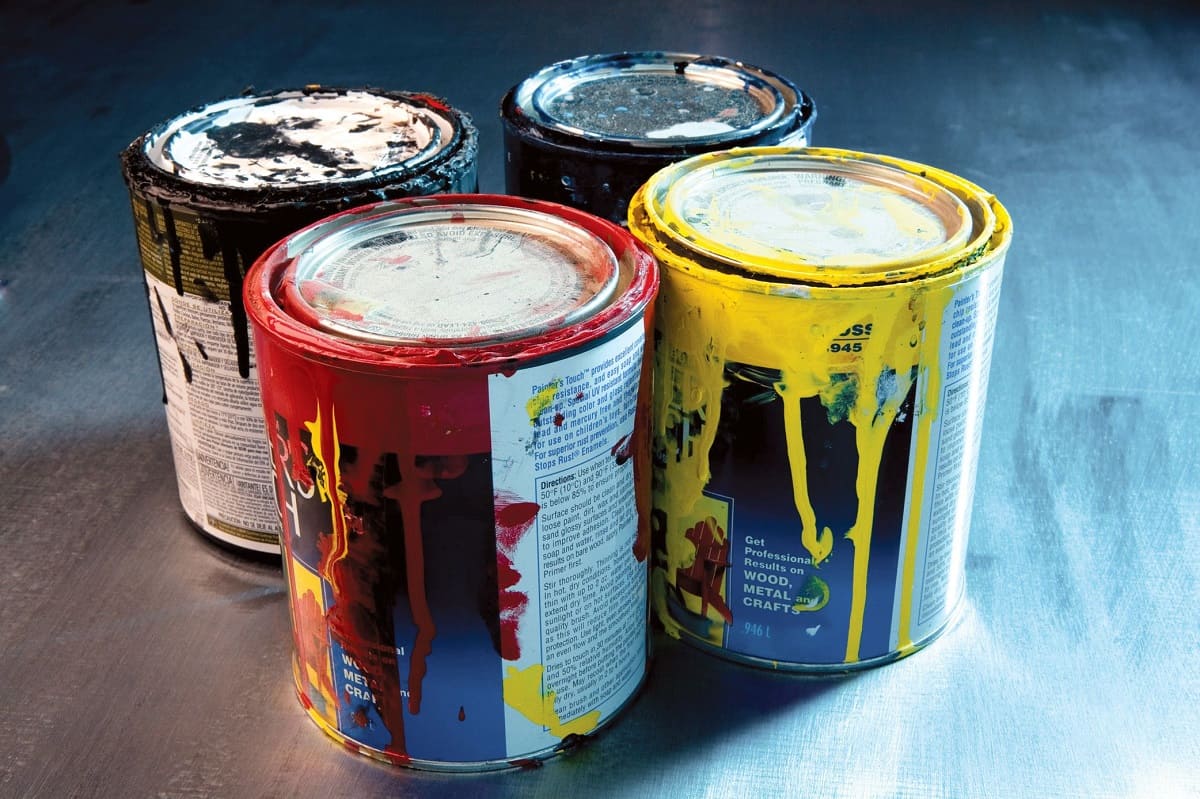


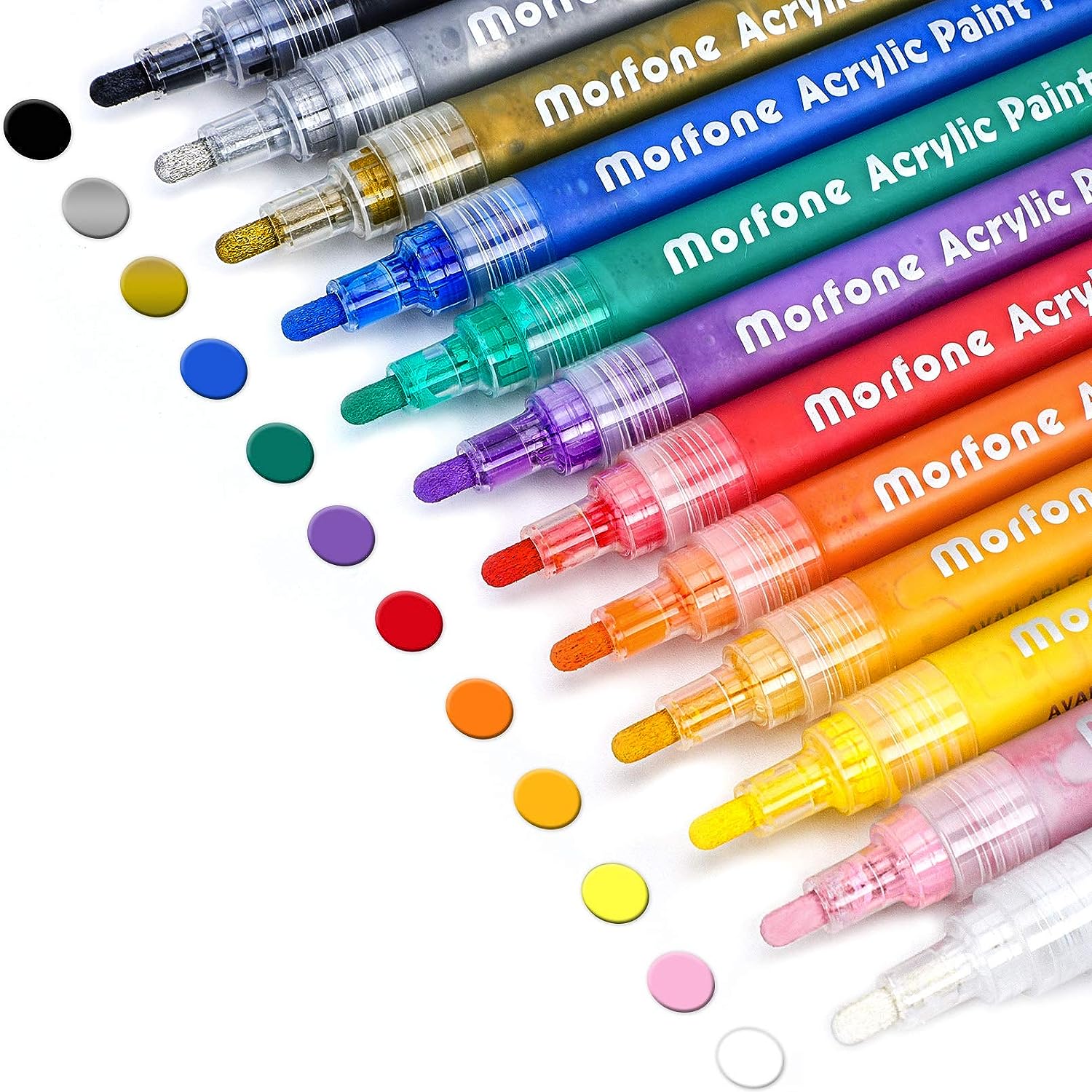

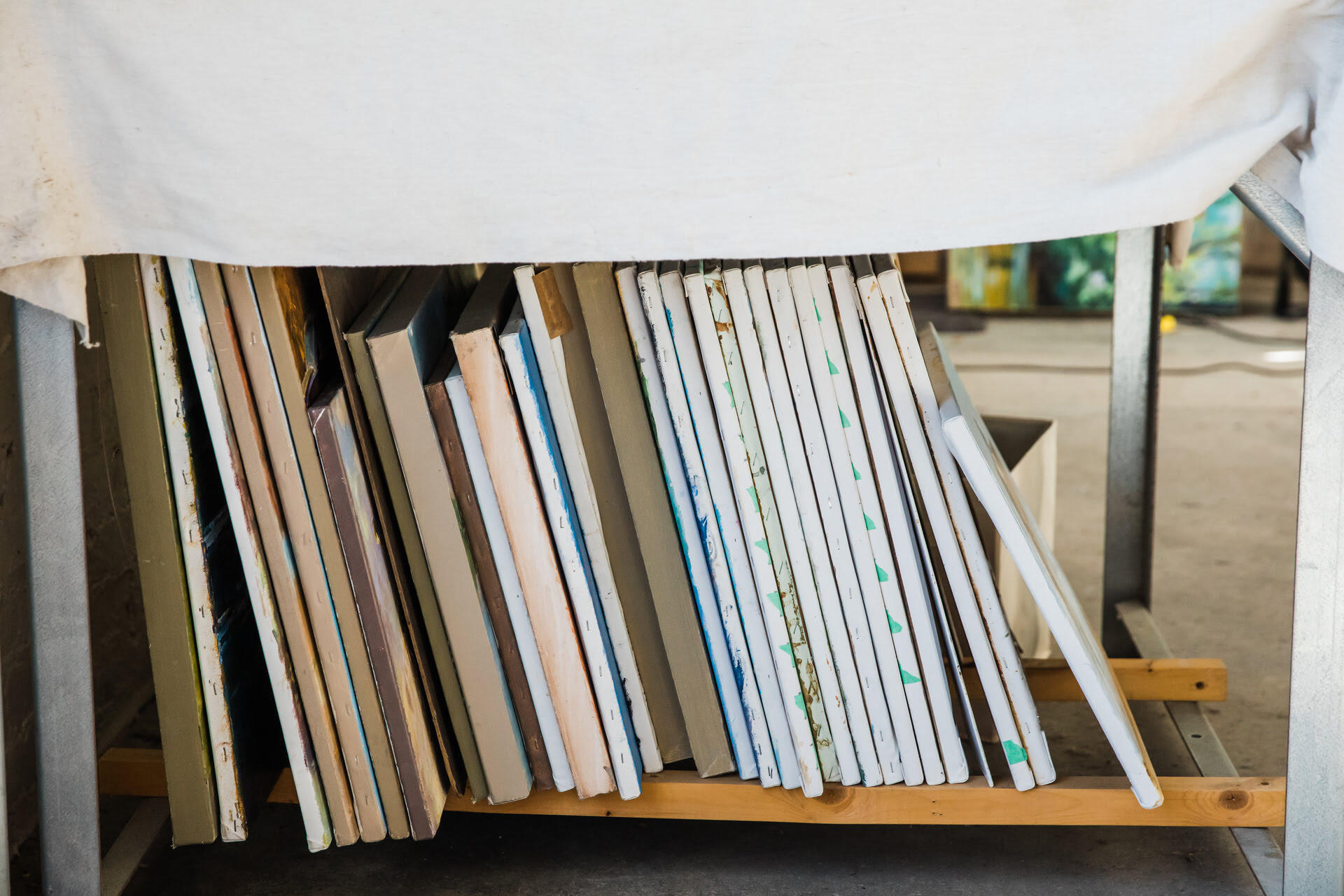


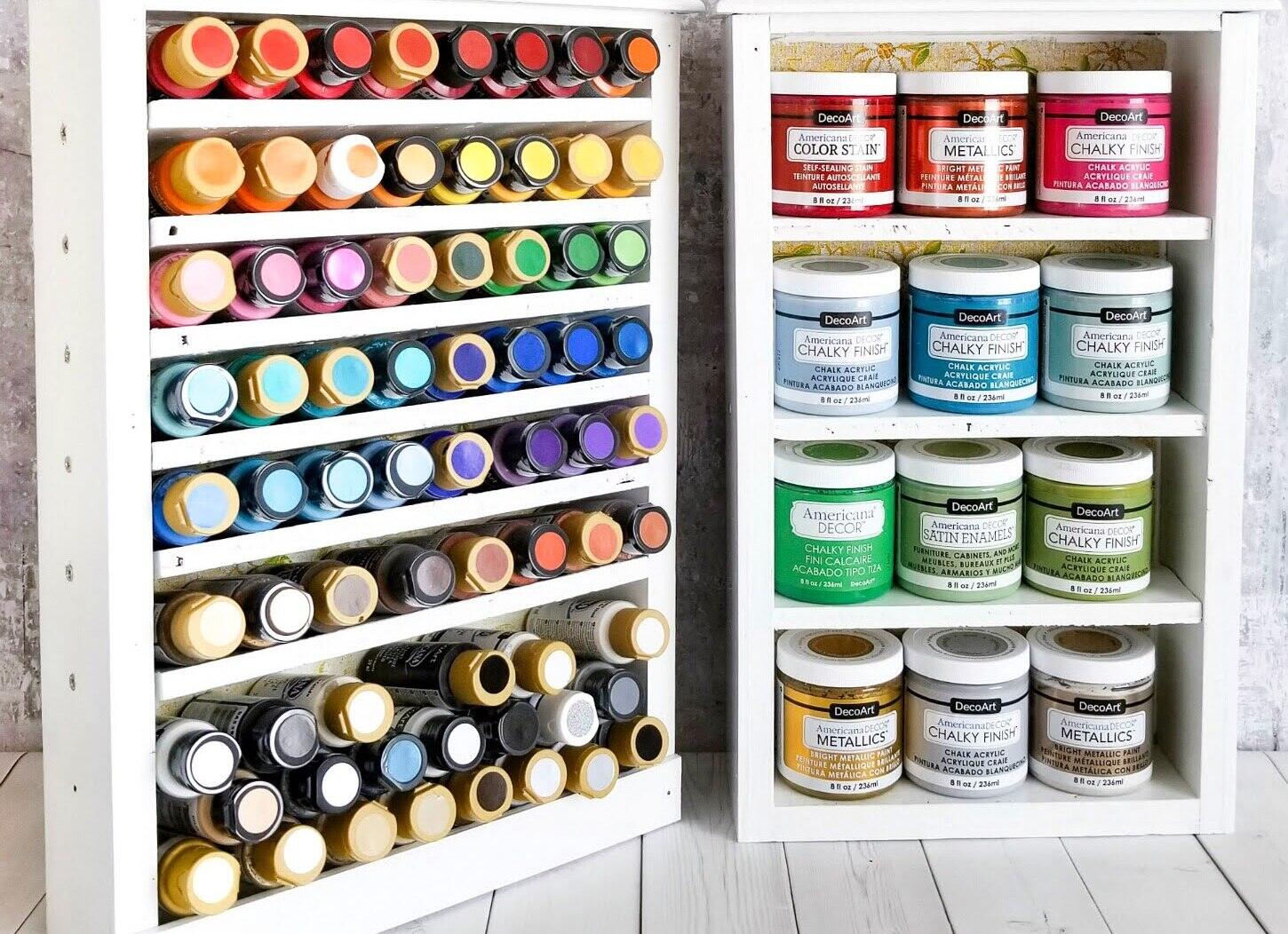
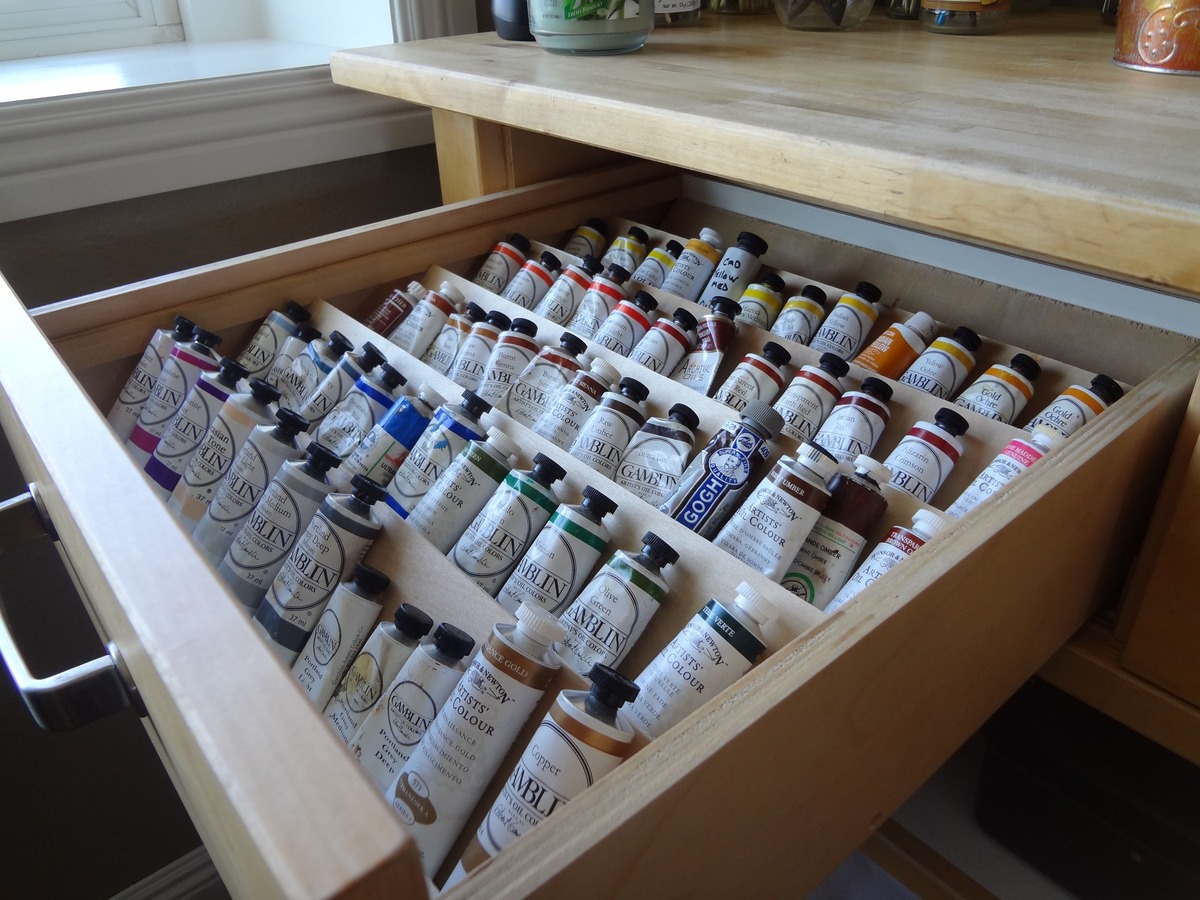
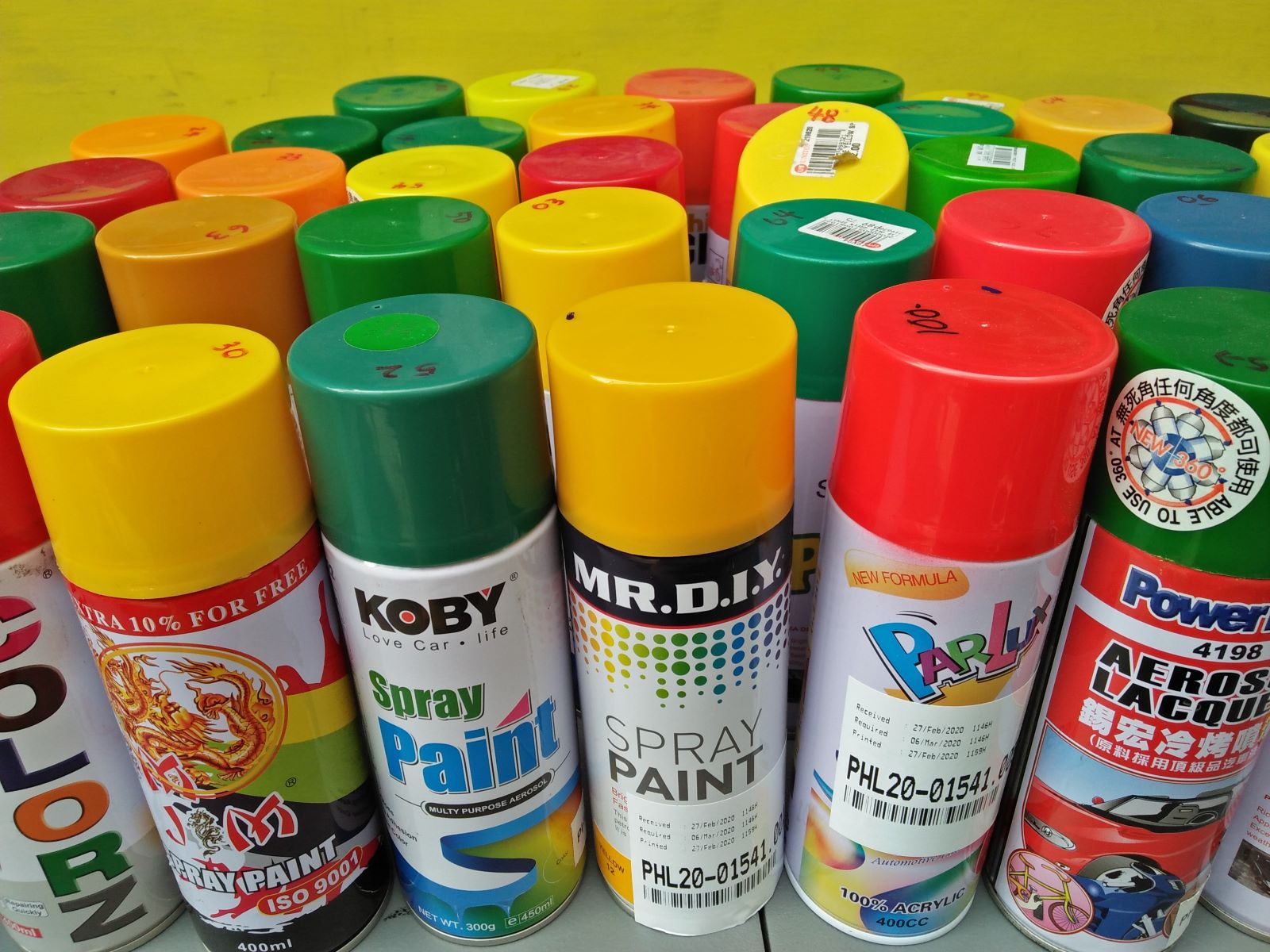

0 thoughts on “How To Store Painting”